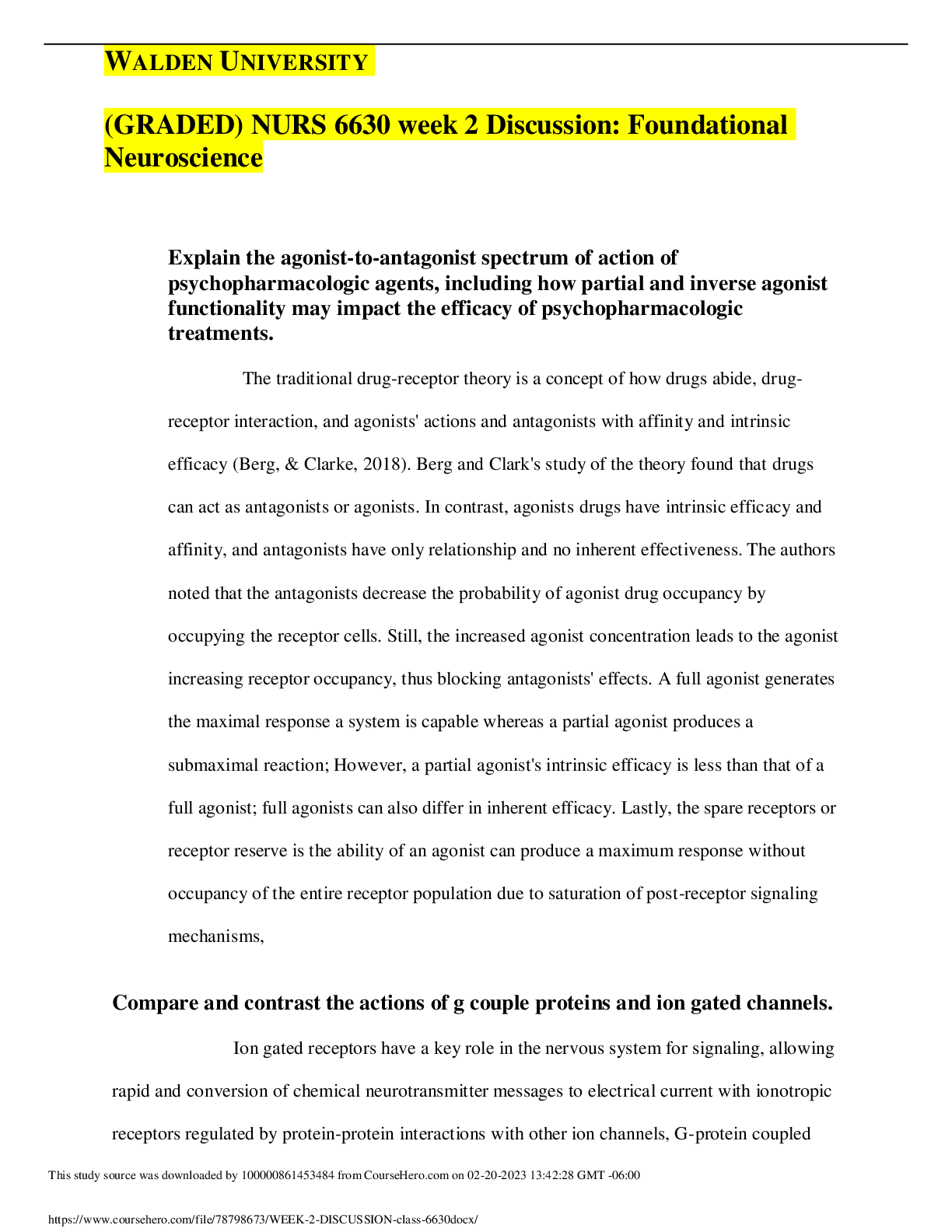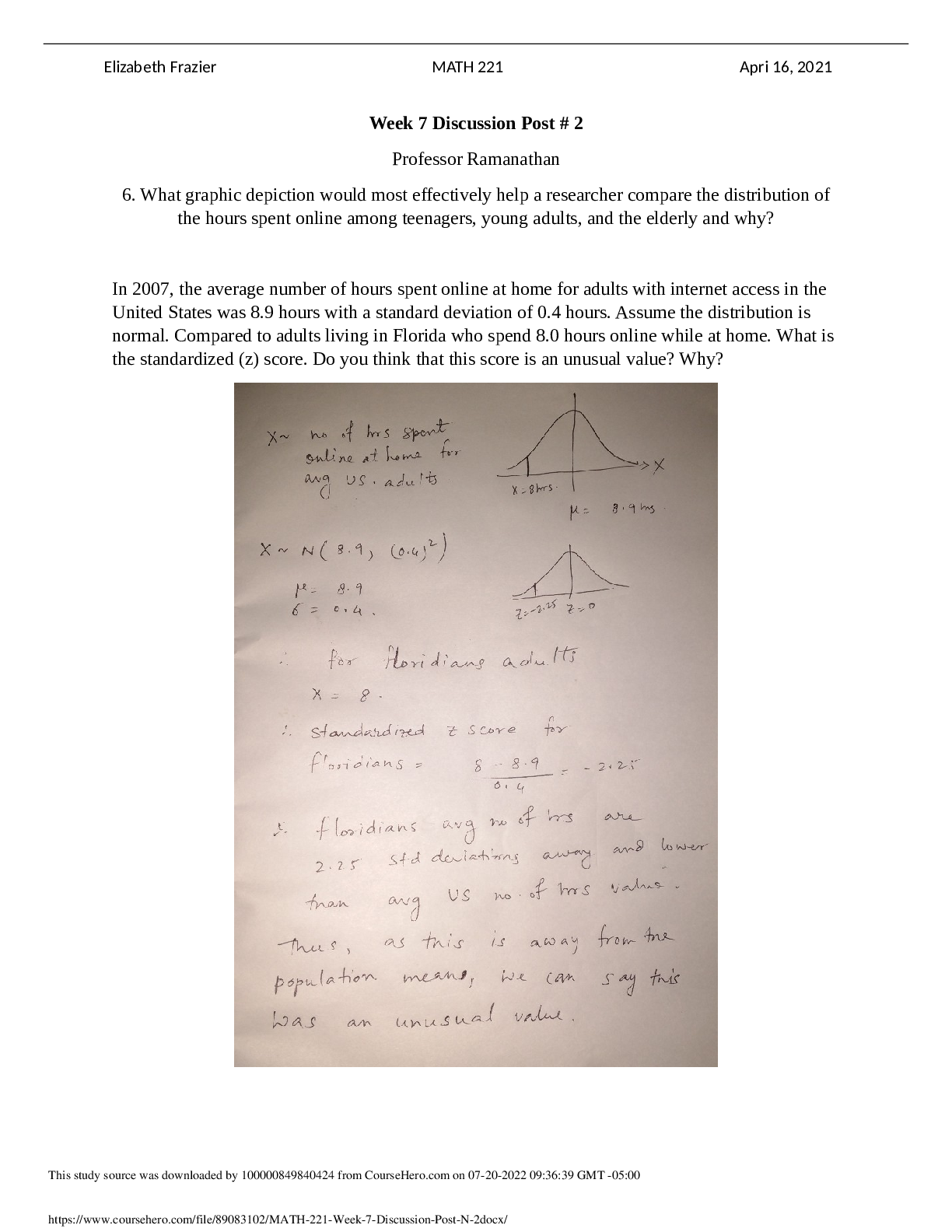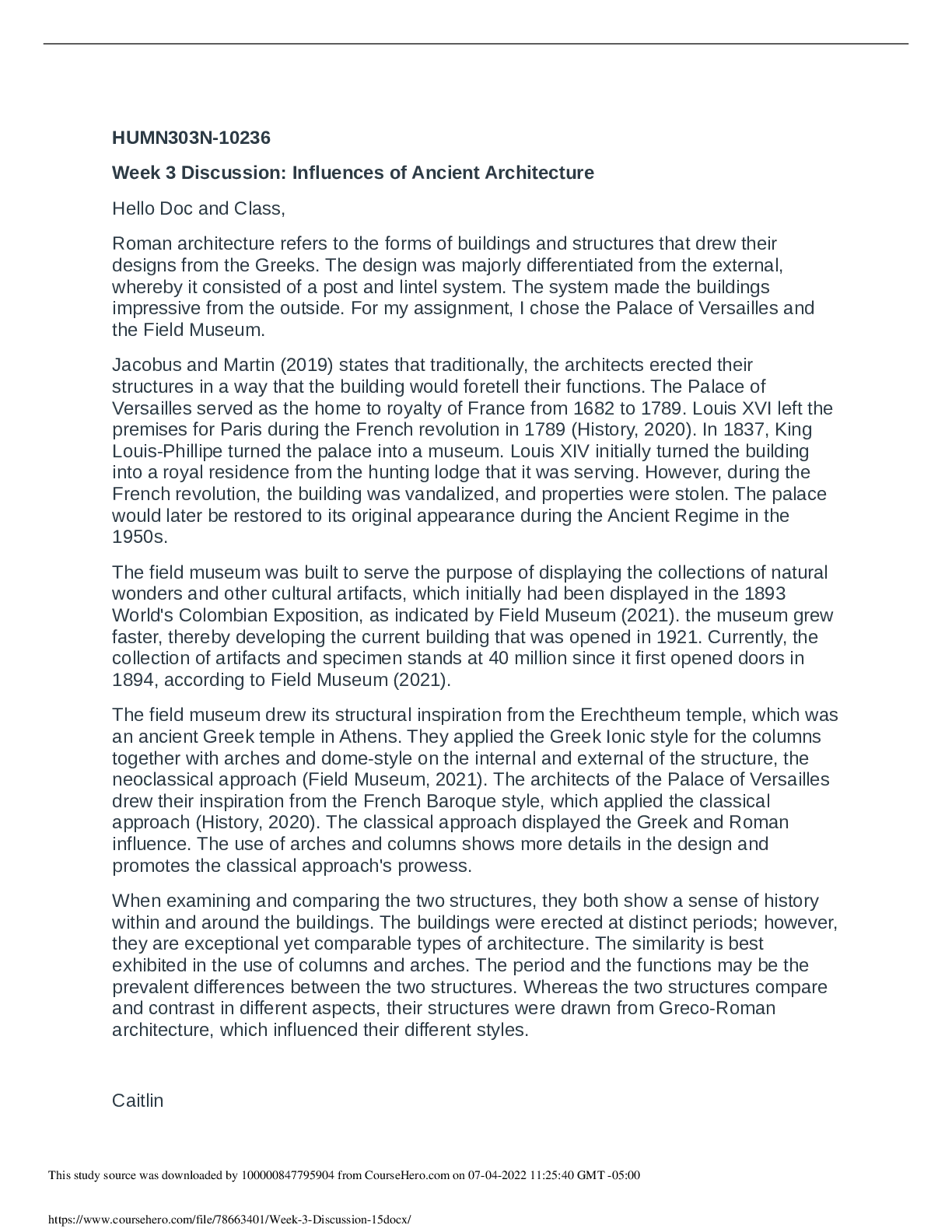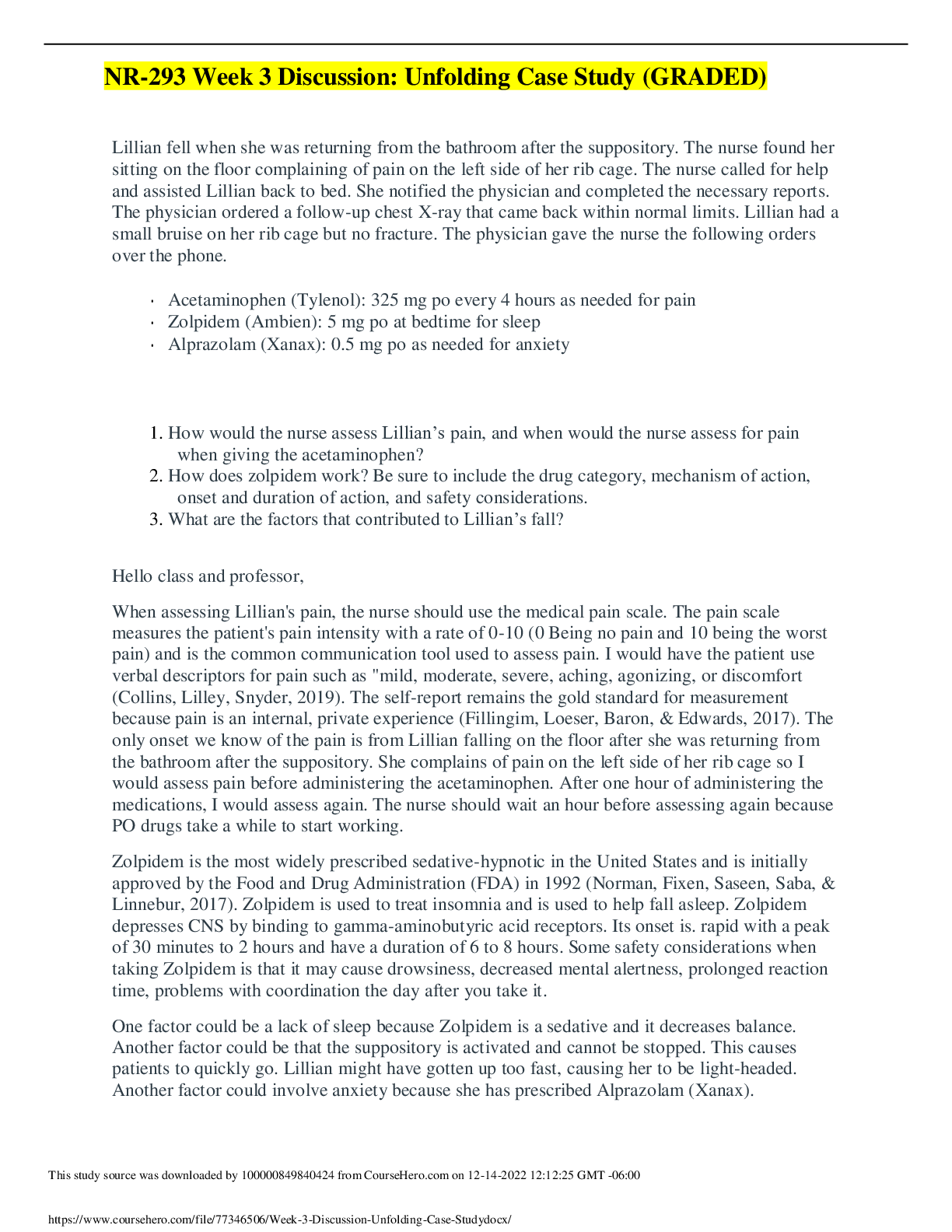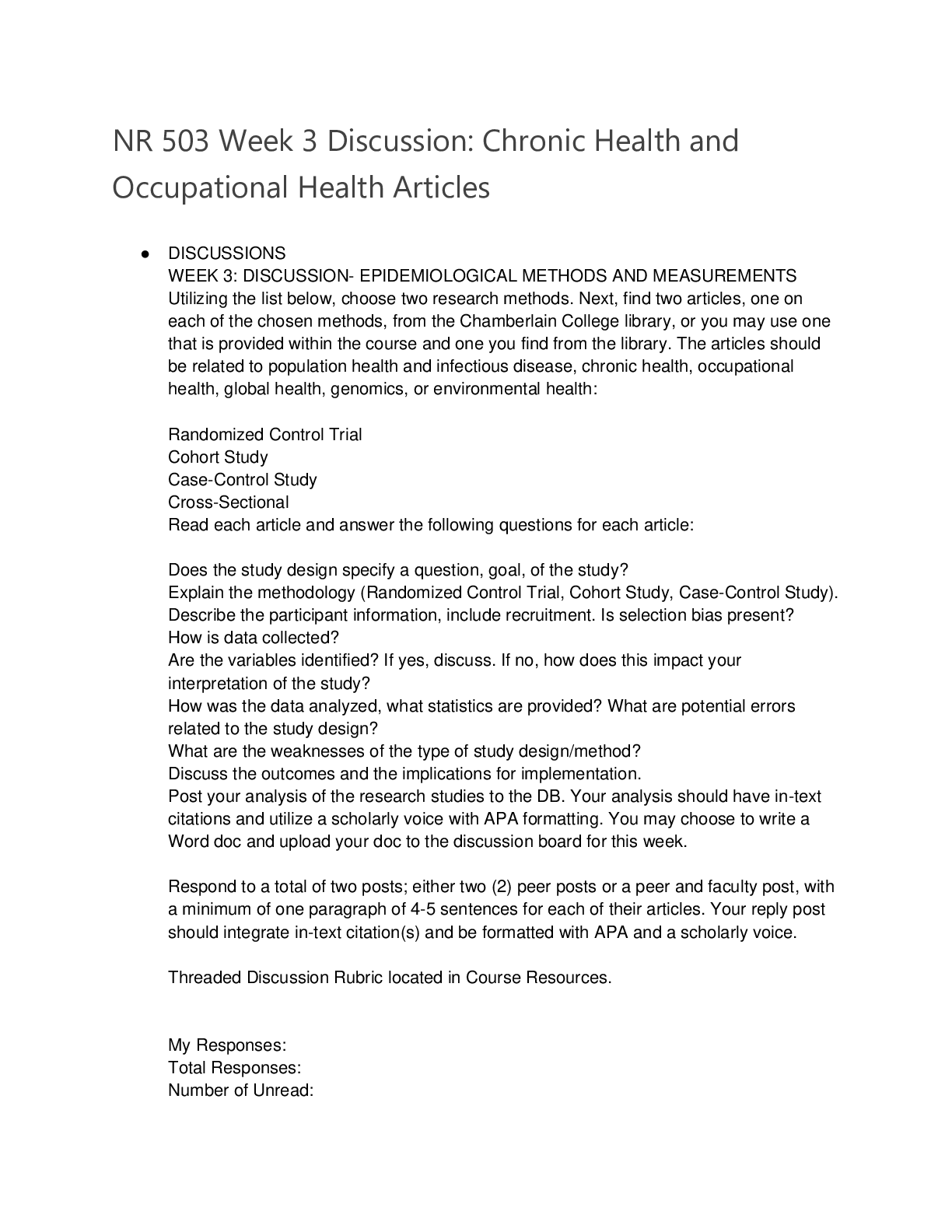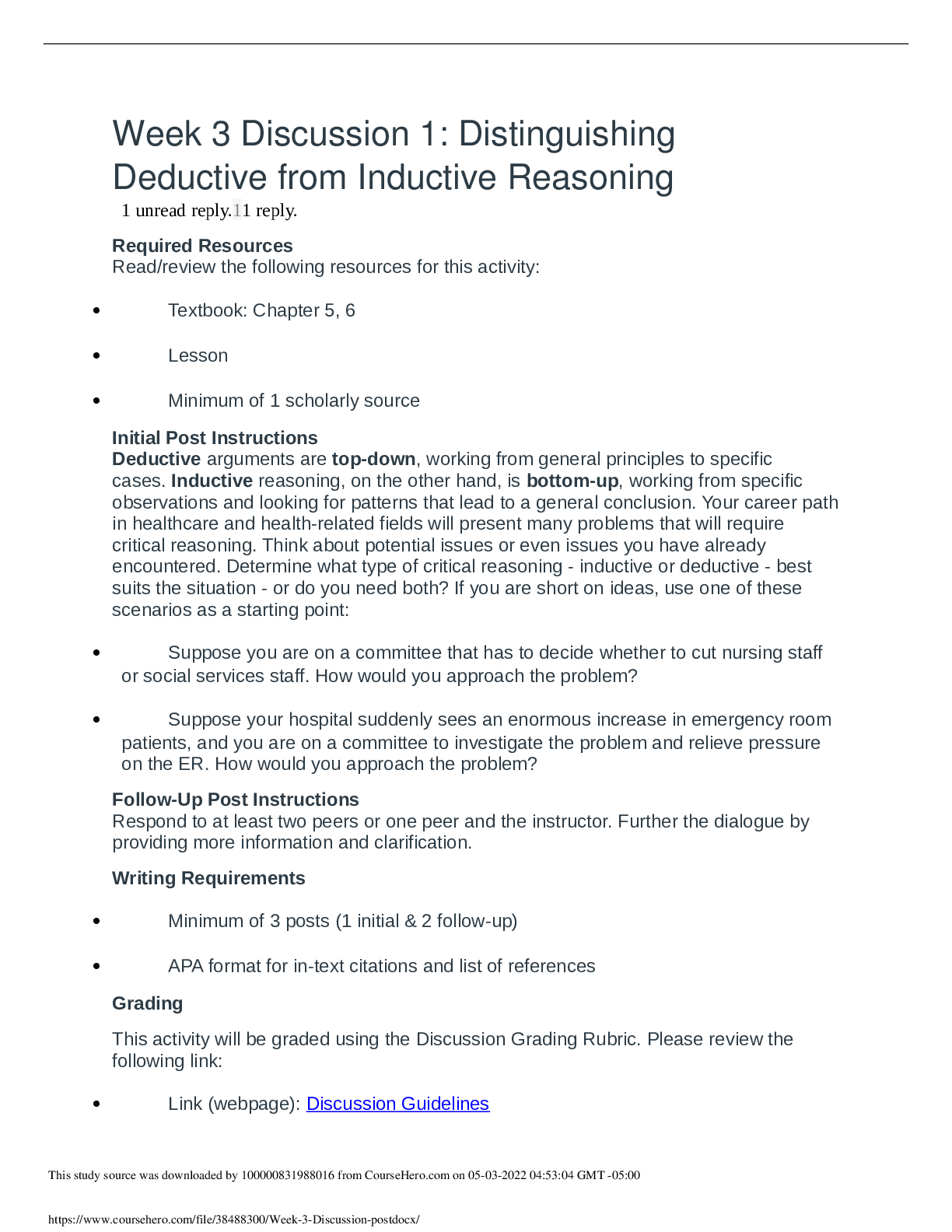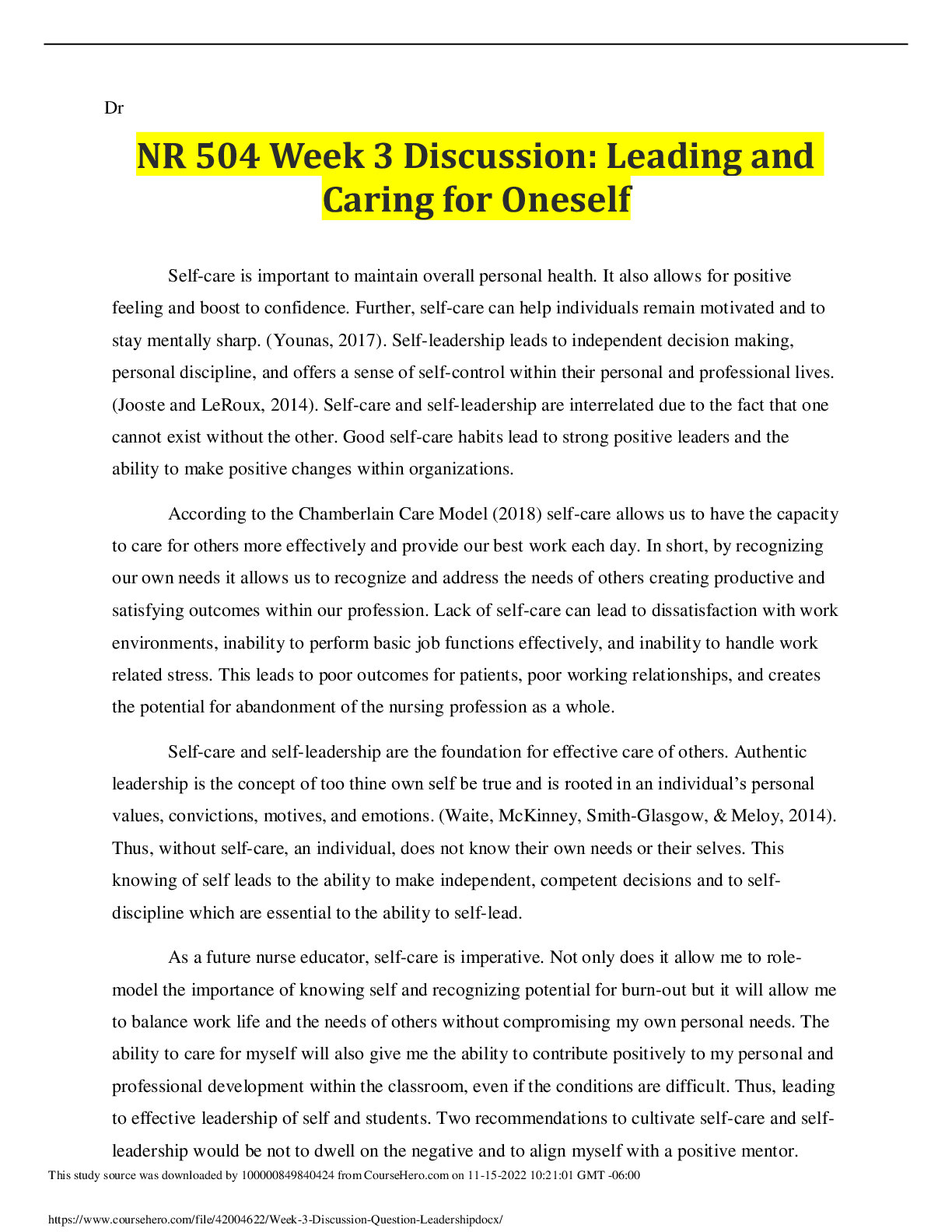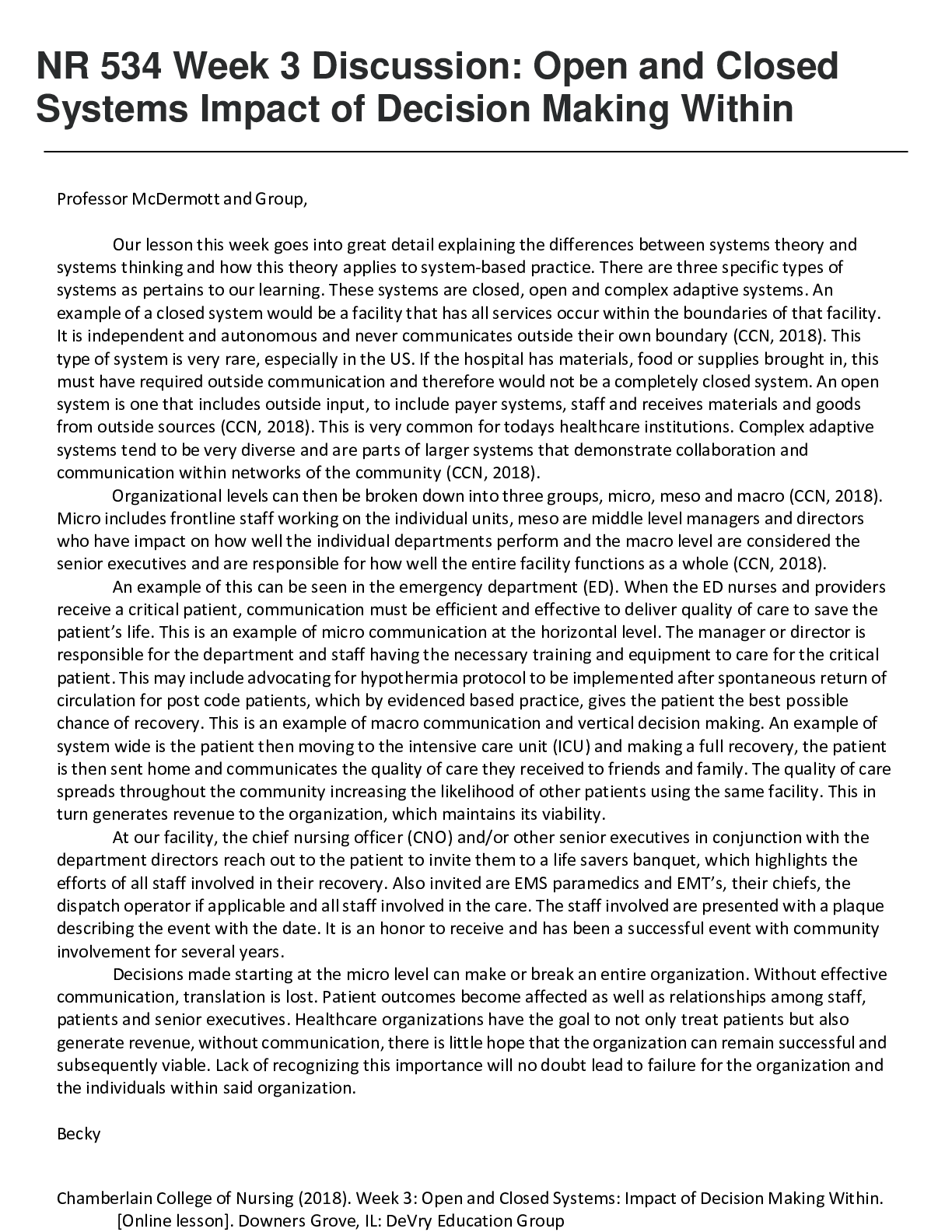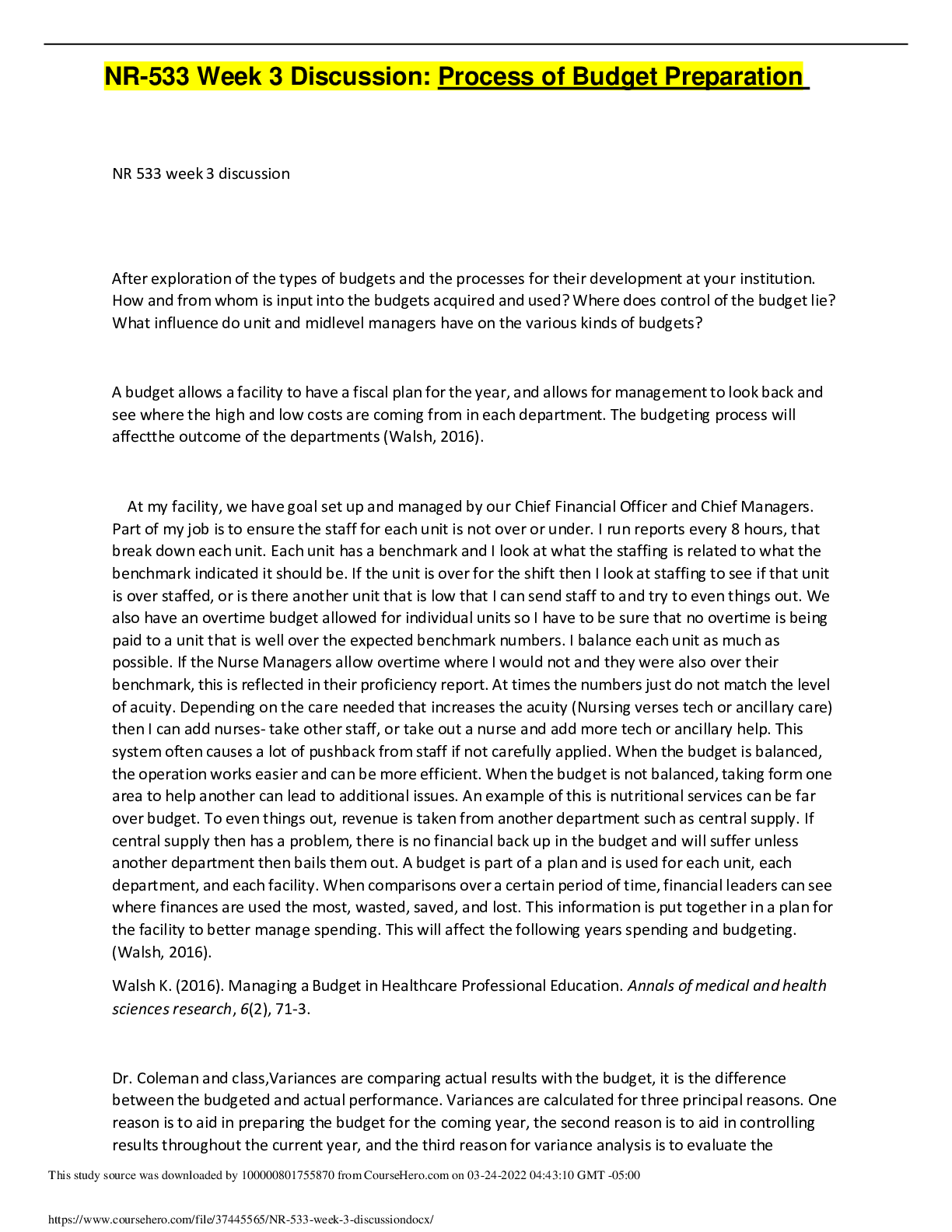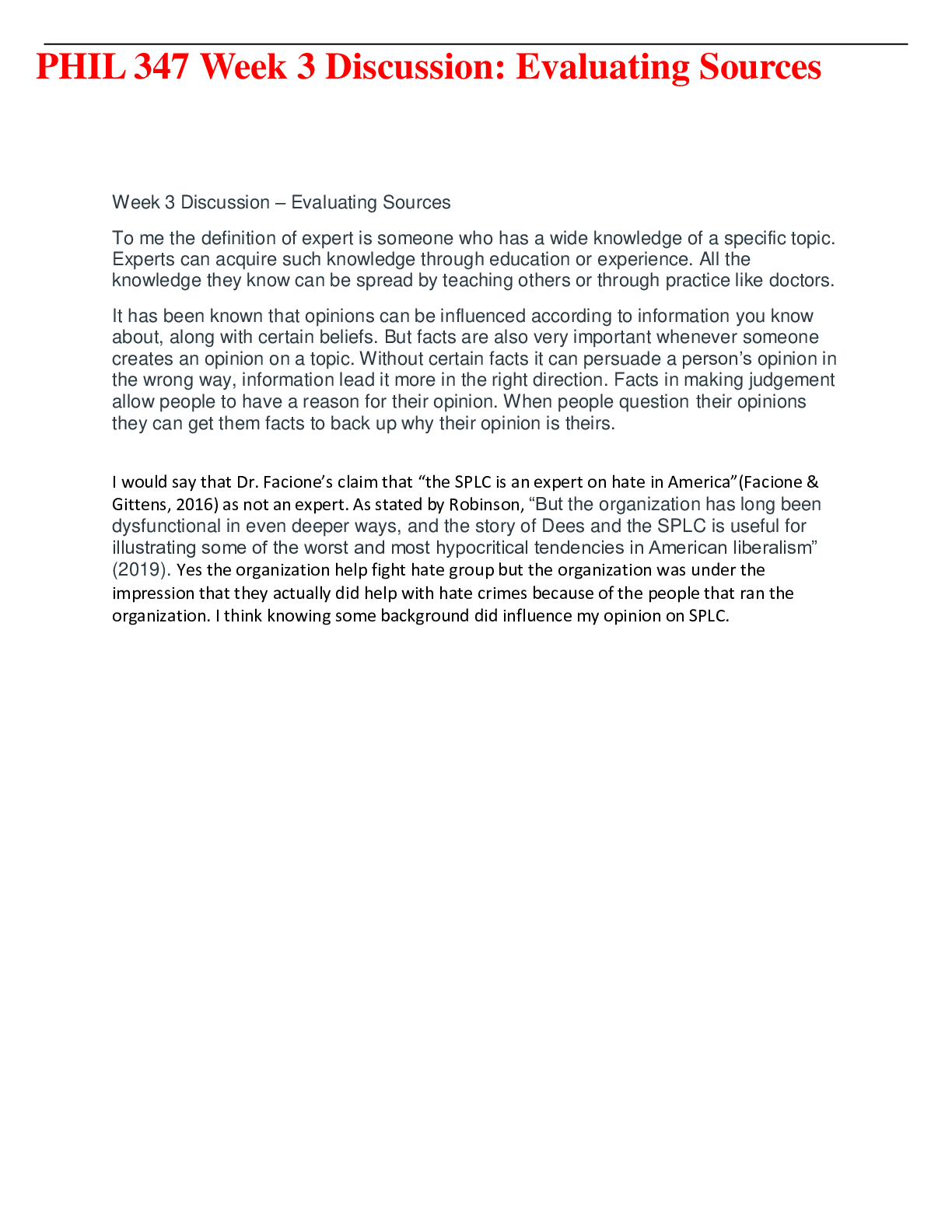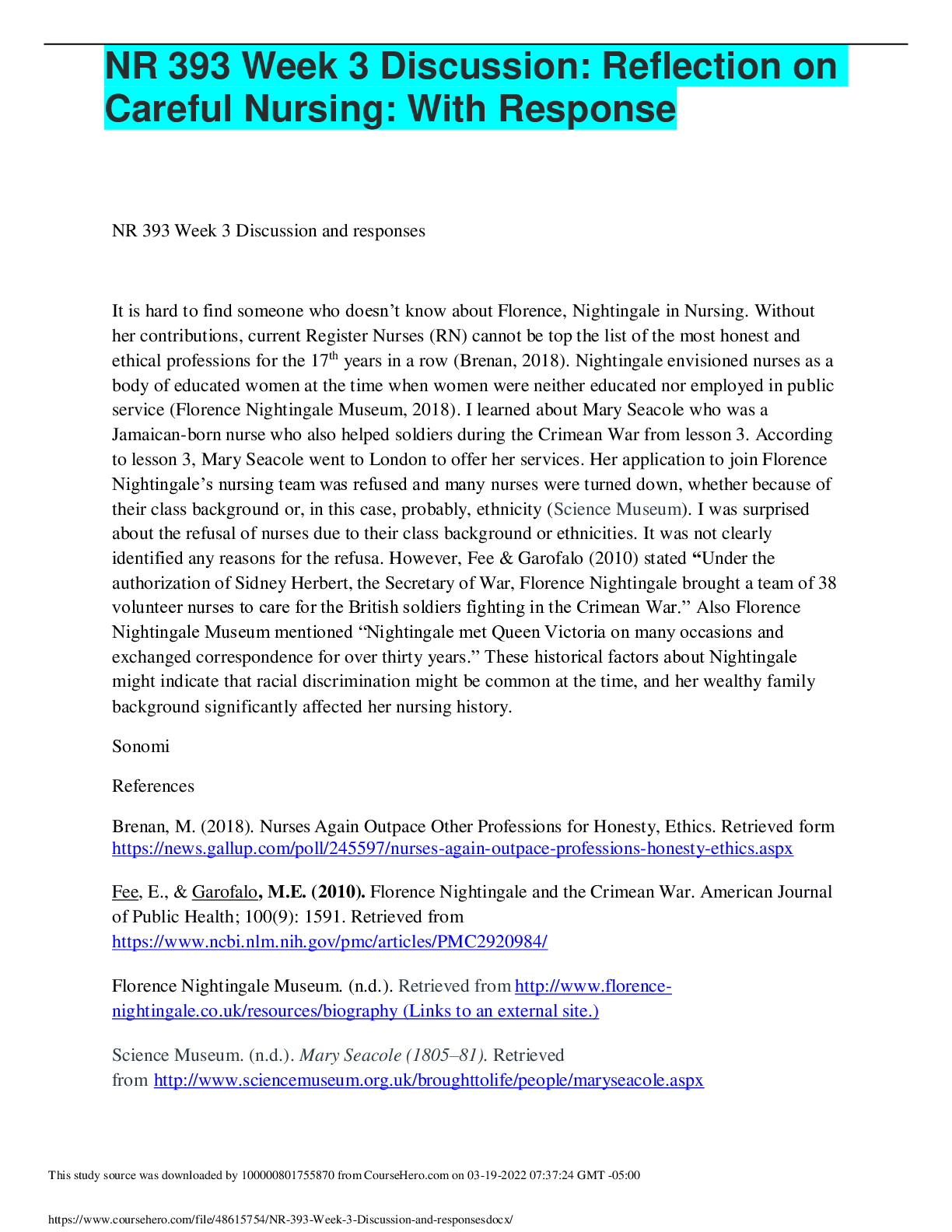Physiology > DISCUSSION POST > BIOS 255 Week 3 Discussion: Blood Vessel (100% Guaranteed Pass) (All)
BIOS 255 Week 3 Discussion: Blood Vessel (100% Guaranteed Pass)
Document Content and Description Below
Week 3: Discussion: Blood Vessel Structure Initial Post Instructions Choose one of the following topics for your initial post: A.Let's start by discussing the structure of our blood vessels. Let's... each take a characteristic of (1) arteries, (2) veins, or (3) capillaries. Build upon what your classmates say to enable us to have a fuller understanding of these vessels that are essential for our existence. B.Cardiac output is the amount of blood ejected from the left or right ventricle in any given minute. Cardiac output must be maintained in order to keep sufficient blood flow through the capillaries. Identify and describe the factors that directly affect blood flow in the circulatory system. There are a few factors that will affect the blood flow in the circulatory system: The body’s blood volume, the body’s blood thickness, the size of our blood vessels, cardiac output and compliance (Tortora & Derrickson, 2017) The body’s blood volume is the total amount of blood within the body and regulated by the kidneys. The composition of blood volume is a combination of plasma volume, platelets volume and erythrocytes volume (Sparks et al., 1987) The body’s blood thickness, better known as viscosity, is how thick, how thin or sticky the blood is. This defines how smoothly or rough will the process of blood flow will be. The thicker the blood the slower the flow. The size of our blood vessels paly a big part in the circulation of blood, when vasoconstriction happen the vessels get smaller making it hard for the blood to move fast. On the other hand, vasodilation will open up the blood vessels allowing for more blood to go through them. Cardiac output is another big factor, if the blood being pump out is not enough to properly circulate and provide blood to every organ that needs it, then a circulary shock may happen. Last but not least, compliance. Compliance is the ability for vessels and organs like the heart to accommodate either small amount of blood or large amounts of blood. Elasticity makes the vessels and heart easily flexible and stretch to accommodate the supply and demand.This study source was downloaded by 100000801755870 from CourseHero.com on 04-15-2022 14:03:44 GMT -05:00 https://www.coursehero.com/file/93555766/Week-3-Discussion-Blood-Vessel-Structuredocx/ References Tortora, G. J., & Derrickson, B. (2017). Principles of Anatomy & Physiology (15th ed., Vol. 2). Danvers, MA: Wiley Sparks, H. V., Rooke, T. W., LORENZ, R. R., & ROOKE, J. O. (1987). Regulation of Blood Flow. Essentials of Cardiovascular Physiology (NED - New edition ed., pp. 155-176). University of Minnesota Press. (Sparks et al., 1987)This study source was downloaded by 100000801755870 from CourseHero.com on 04-15-2022 14:03:44 GMT -05:00 https://www.coursehero.com/file/93555766/Week-3-Discussion-Blood-Vessel-Structuredocx/ Powered by TCPDF (www.tcpdf.org) [Show More]
Last updated: 1 year ago
Preview 1 out of 2 pages

Reviews( 0 )
Document information
Connected school, study & course
About the document
Uploaded On
Apr 15, 2022
Number of pages
2
Written in
Additional information
This document has been written for:
Uploaded
Apr 15, 2022
Downloads
0
Views
56

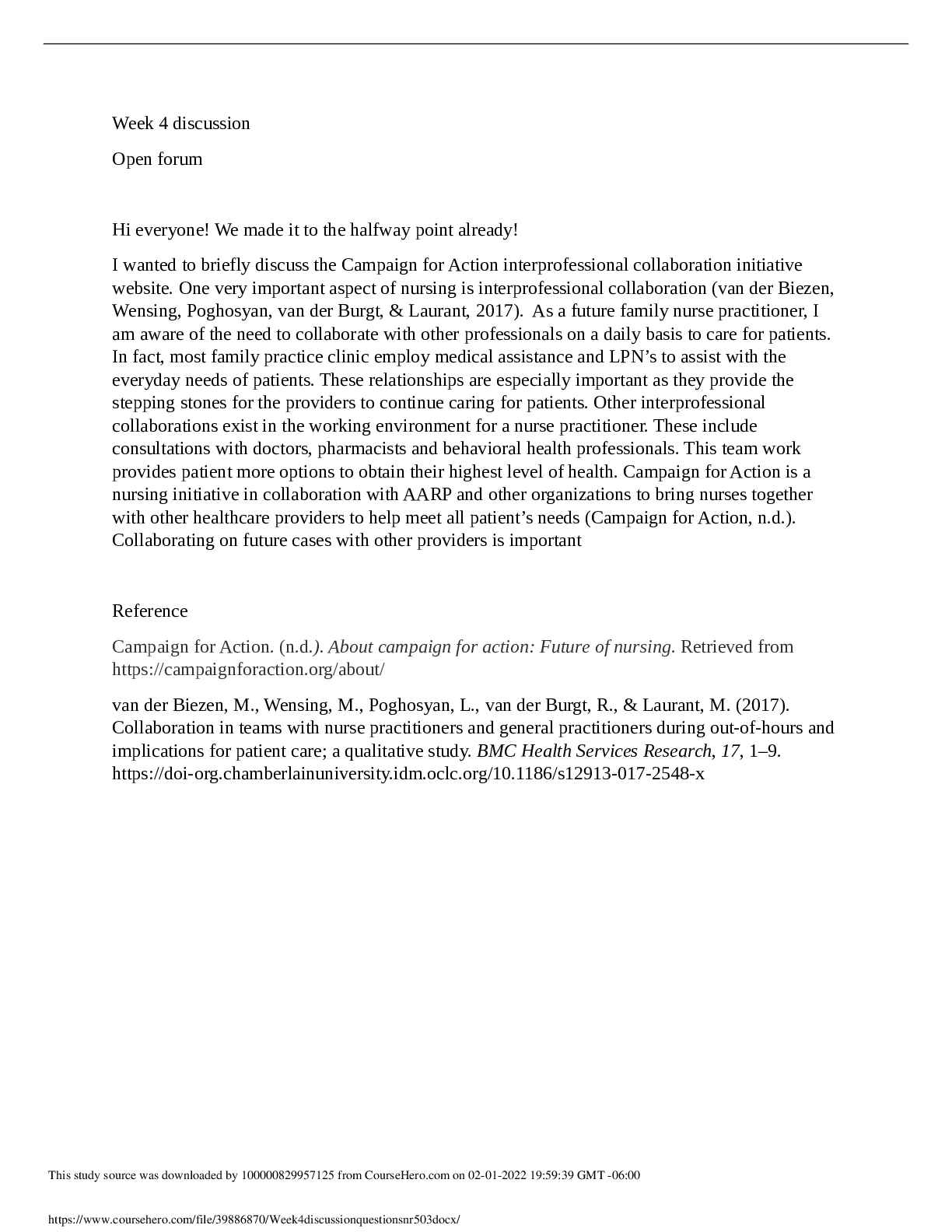

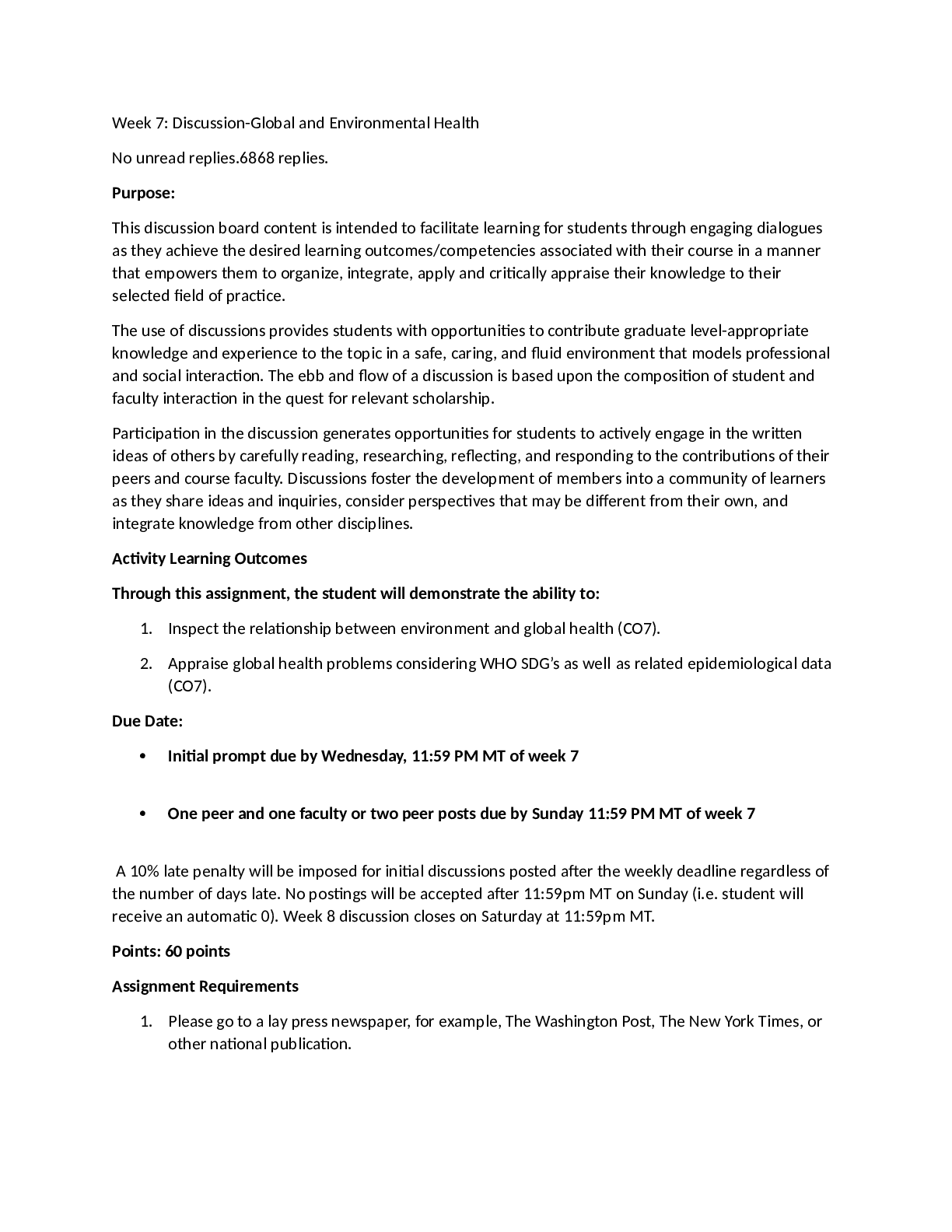


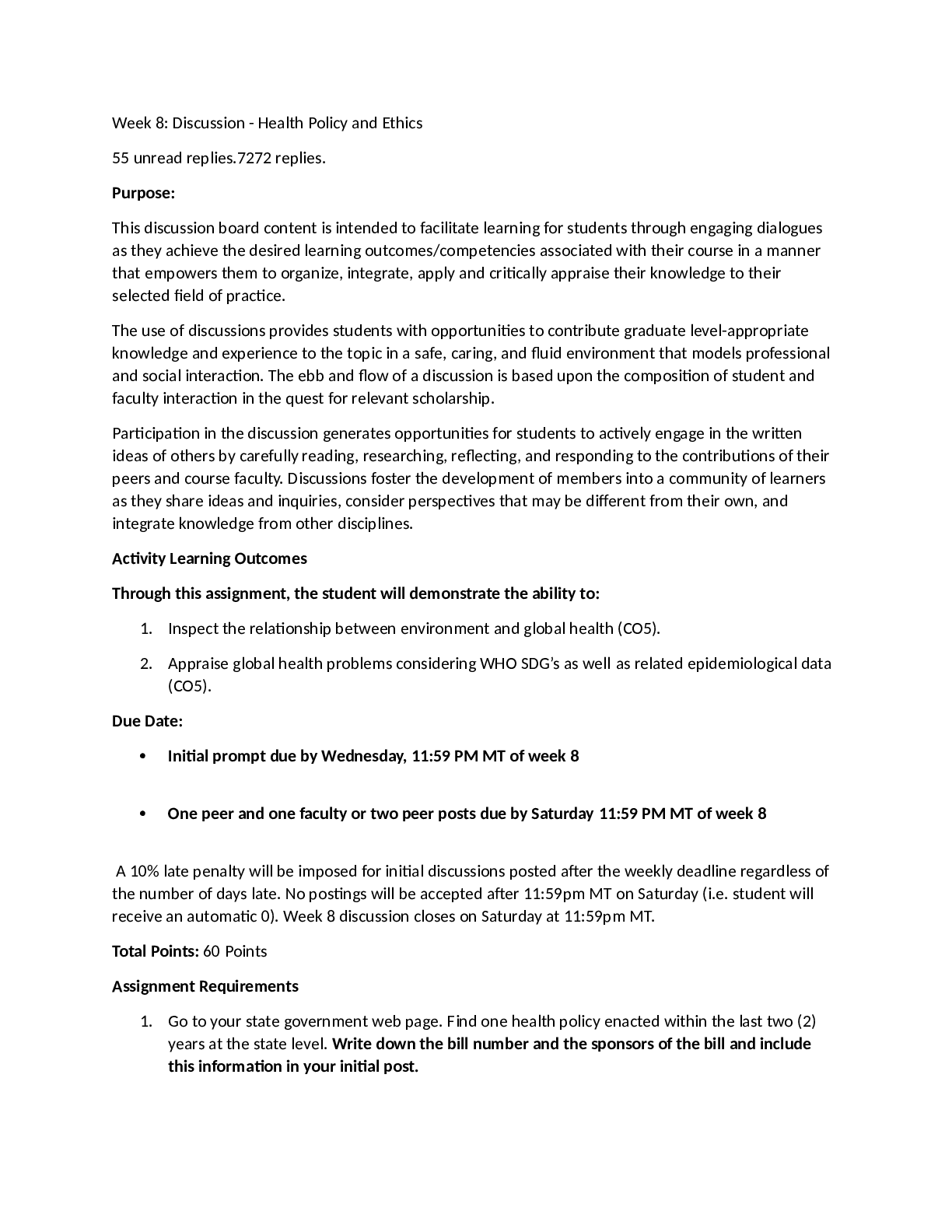

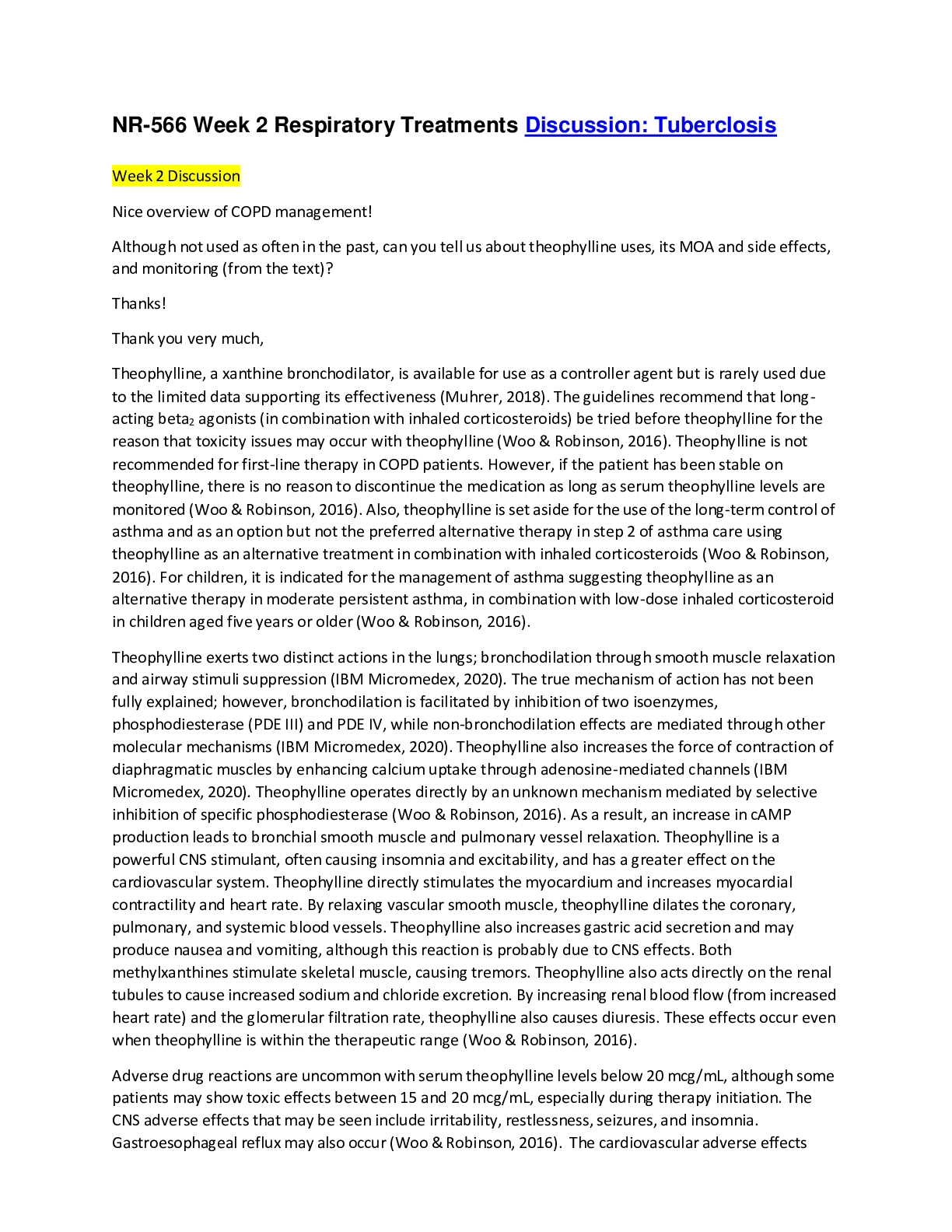
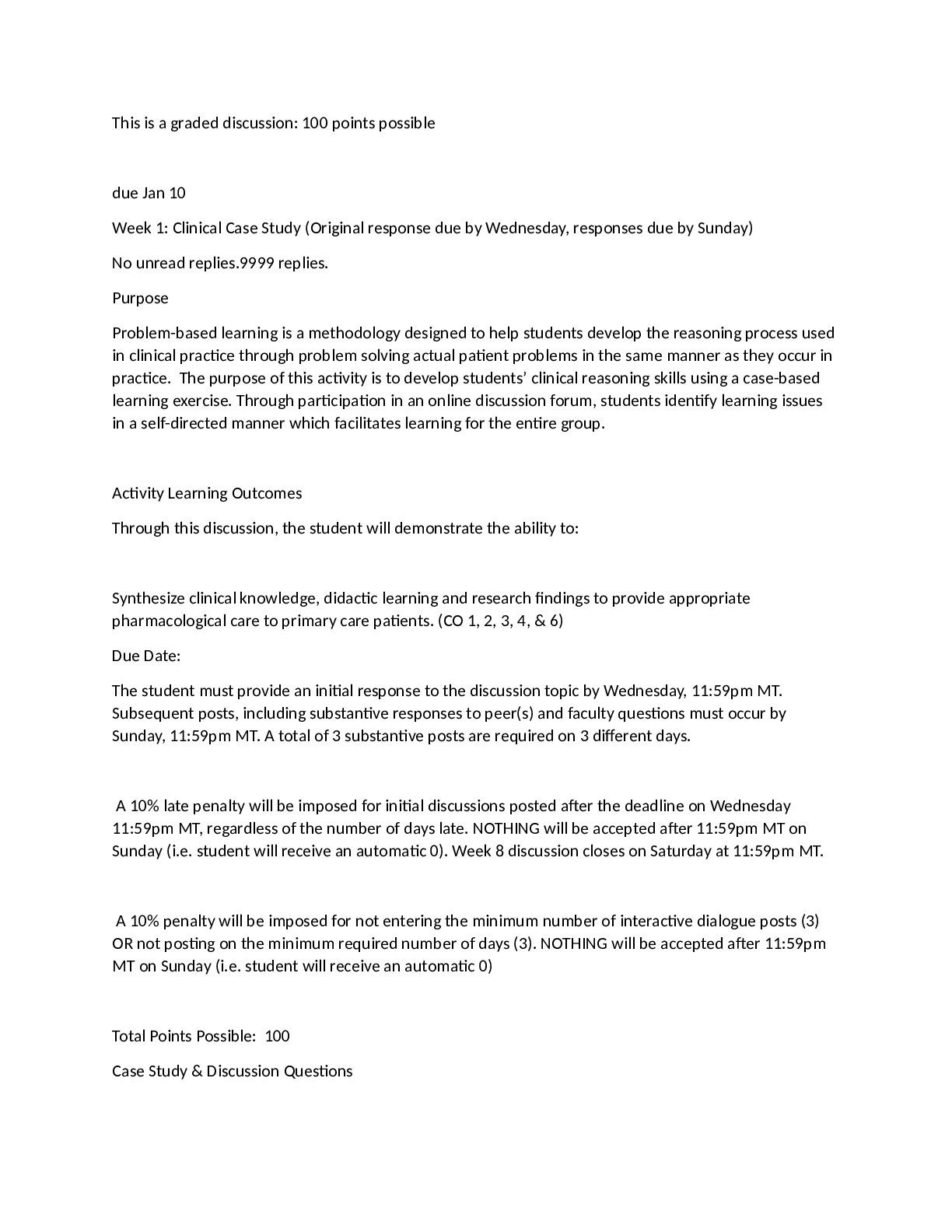
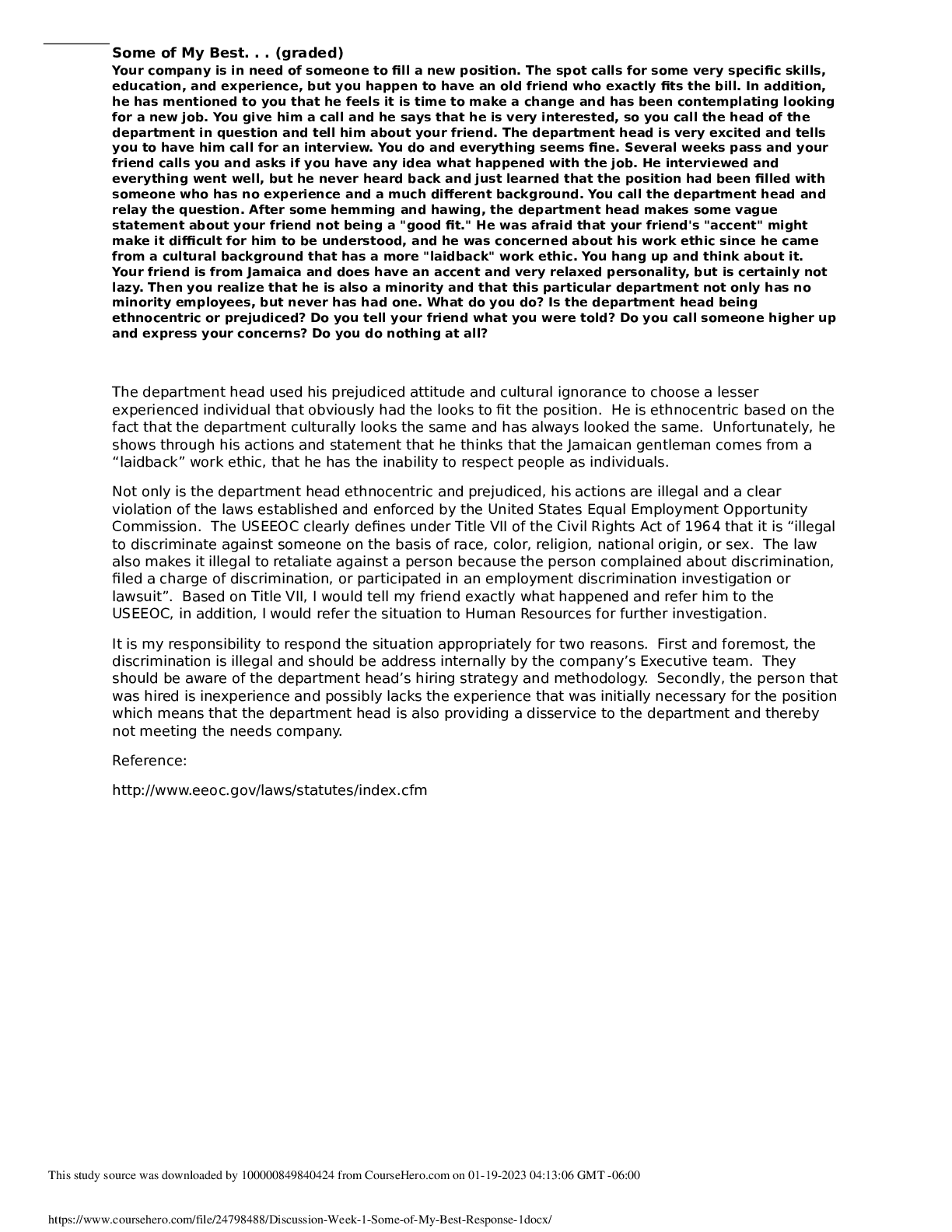


.png)
